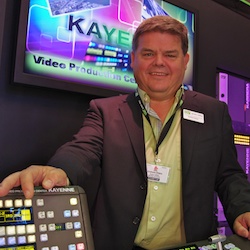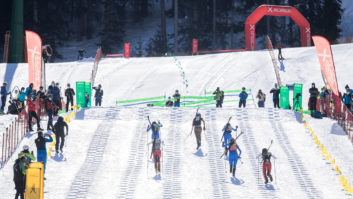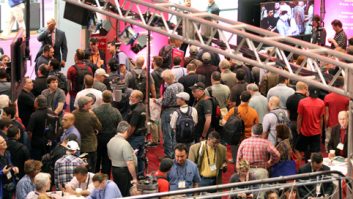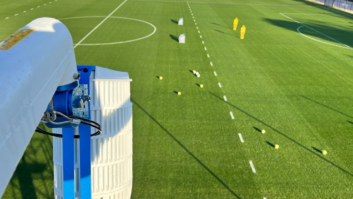
Live sports command the premiums that drive broadcasting worldwide, but the linear directed feed that has dominated productions to date is changing. 2013 will see the emergence of new techniques and technologies enabling broadcasters and content owners to not only cover more events but to generate more content per event. “We term it nonlinear production and it’s coming at us like a train. It already happened in editing and in news production and now its being taken into sports,” declared Graham Sharp, SVP corporate development, Grass Valley (pictured). “The linear process of producing live leaves a lot on the cutting room floor.” he argued. “Instead, what will happen is that all the cameras will feed a giant bit bucket of storage with multiple operators or producers able to access it, editorialise or direct it and deliver multiple feeds in-stadia, to mobile and connected TV platforms, to individual player websites, for team training or specialist feeds for different countries.” The same technology that enables broadcasters to cut costs by hosting part of their live production at a central hub rather than on-site is also allowing them the chance to expand their editorial options to deliver richer content to multiple platforms. “We’ve done some trials of remote production and it reminds me of the early days of NLE,” said Sharp, a former executive at Avid and Discreet. “When we tried to sell NLE on its return on investment, the pitch was that you could do the same work in less time with fewer people. In my view it transpired that NLE never really saved people money. Instead they became more creative. They still took a day to do the edit, but they did more versions of it and ended up with a better product. “The same will happen in live sports where the technology layer is being abstracted from the production environment. Currently, you need a shader and a graphics op, loggers and server ops and switcher ops and other technicians in the van, but those roles can be abstracted to an engine room which can be located anywhere. “This may reduce the cost of not housing these staff on-site, but in many cases I think their roles will be replaced by more creative ones – journalists and producers – to maximise much more of the content already being recorded in order to distribute multiple, new enriched feeds.” Grass Valley dubs this live editing process ‘segmenting’ in which metadata is the key to determining which clip is played out to particular feeds. GV performs this function with its editor Edius into which it is merging its workflow management software Stratus to deliver live logging, editing and playout tools into the hands of creative personnel. “We’ve got to shift from having technicians operating all the equipment to having creative persons operating the equipment,” said Sharp. The concept of giving creatives access to all the video content from one ‘bit bucket’ of camera feeds could apply to any sport from Champions League matches to the Tour de France to motor racing. Explained Sharp: “In a Formula One Grand Prix you typically only get a single international feed out onto which rights holding broadcasters add their own graphics and commentary. However, if the host broadcaster enabled individual producers from rights holders to select content, such as action from a particular driver’s point of view, they could sell an enriched output to their audience. The richer the content, the more you can charge for.” And if an expanded team of journalists is not enough on-site, how about crowd sourcing for statistics? “You could have spectators comment on the action over WiFi, generating metadata to feed player-specific websites or related online apps,” he suggested. “It’s all about creating more output and that’s built on more metadata – then it’s up to rights holders to monetise it.” Adrian Pennington www.grassvalley.com







